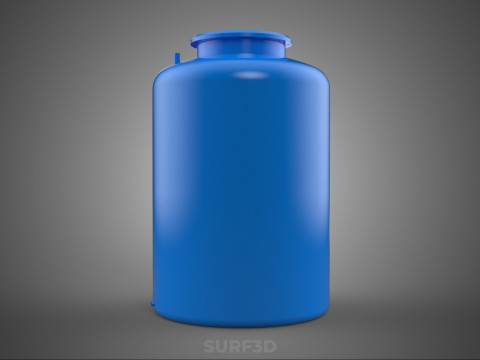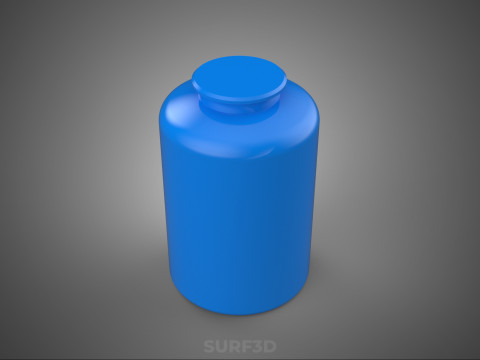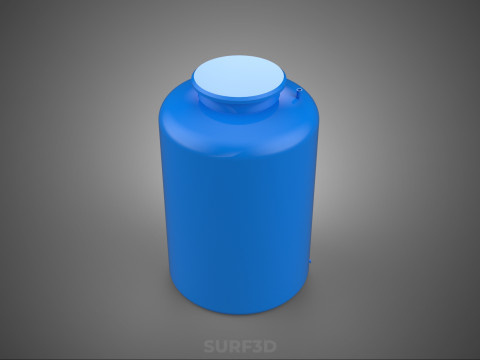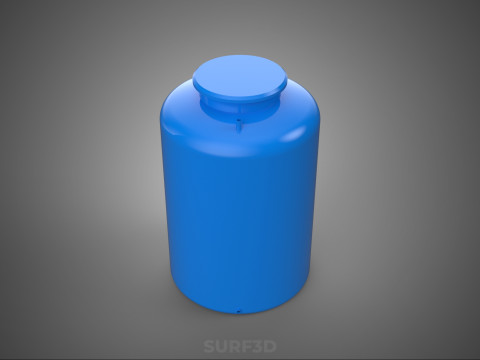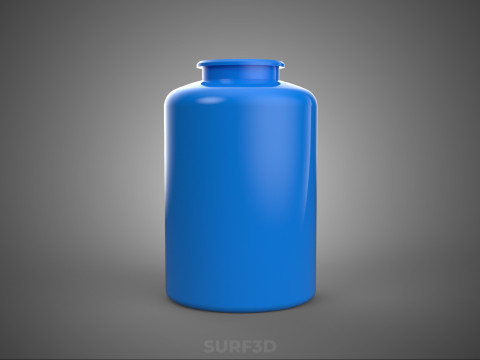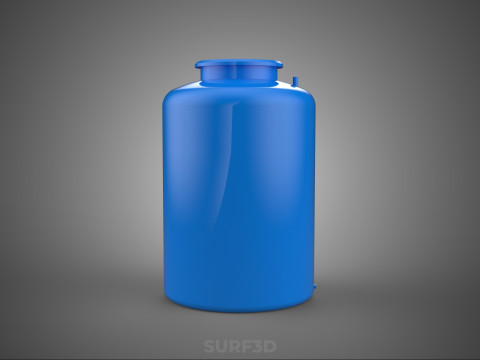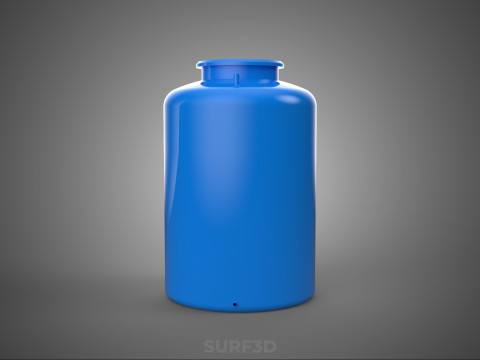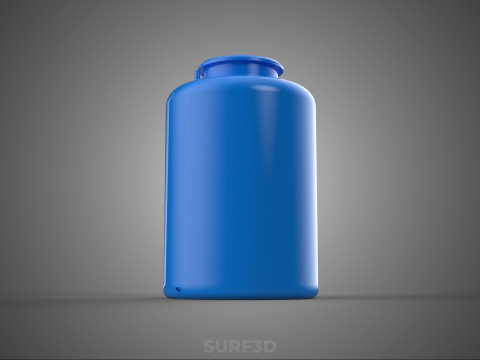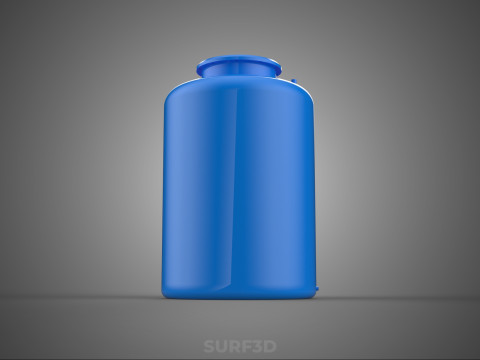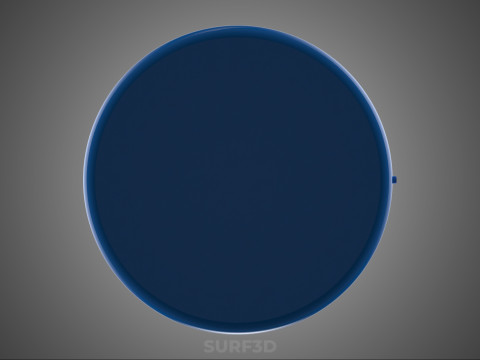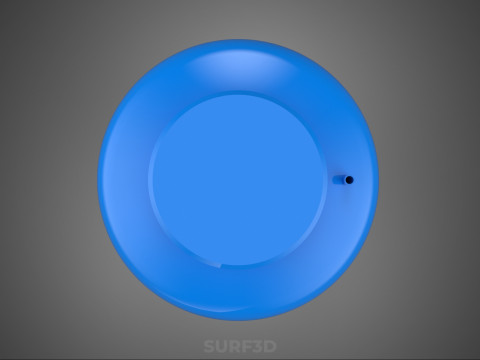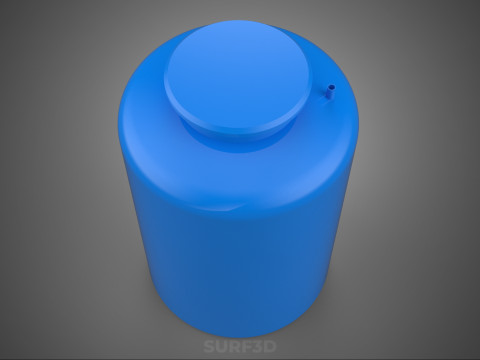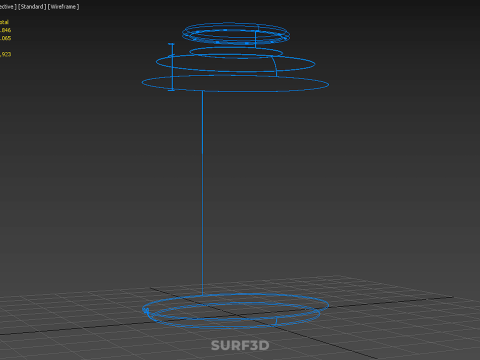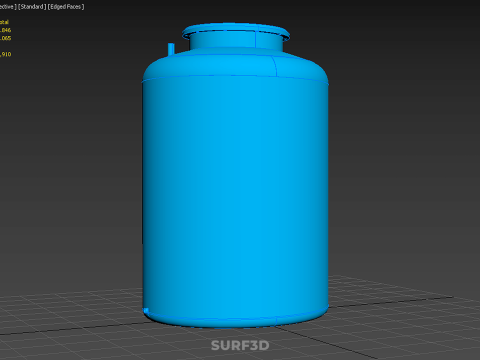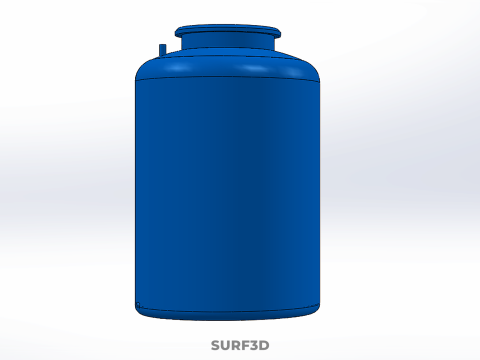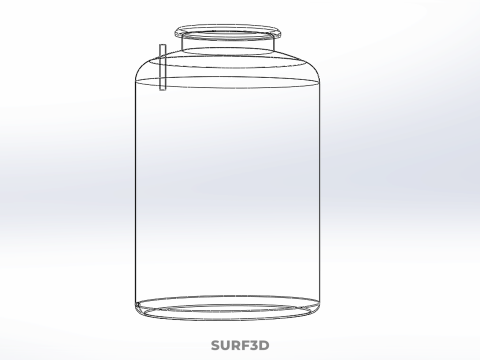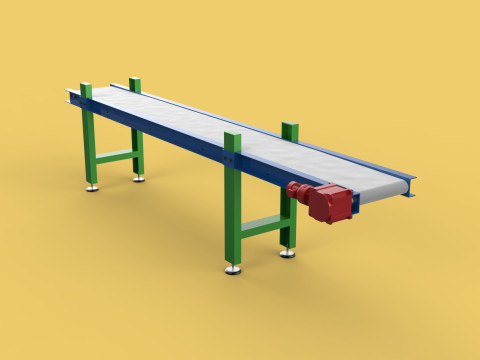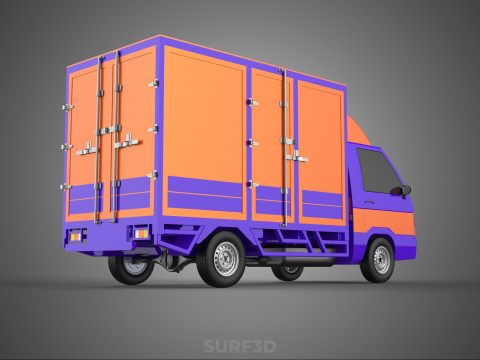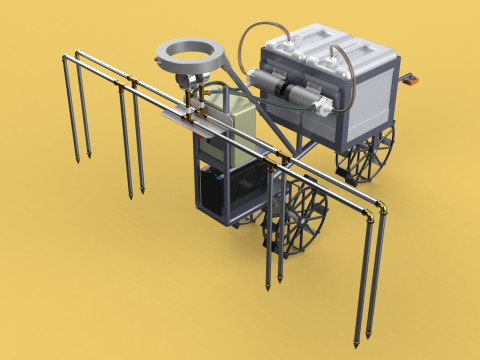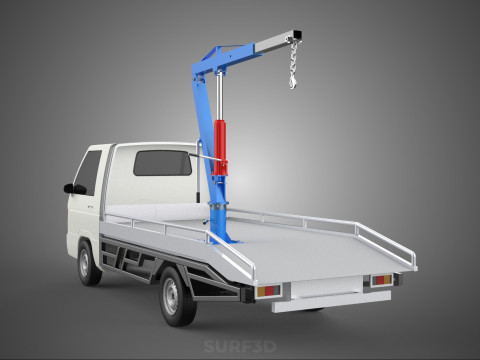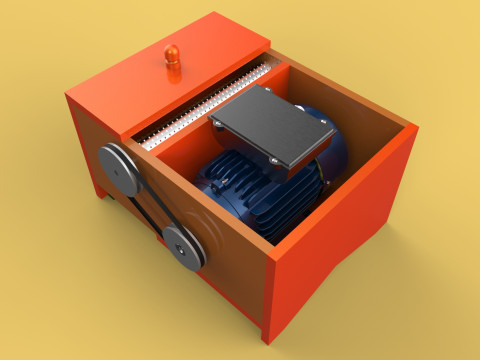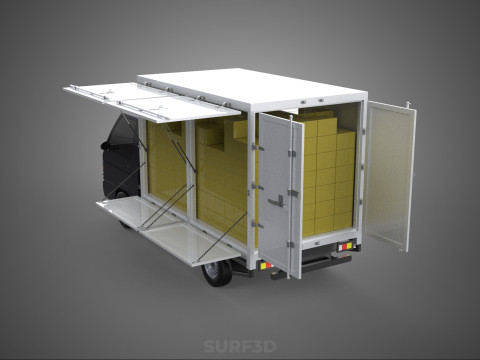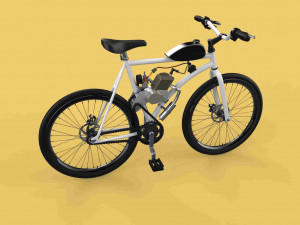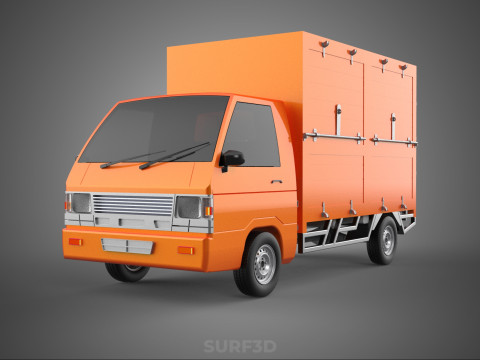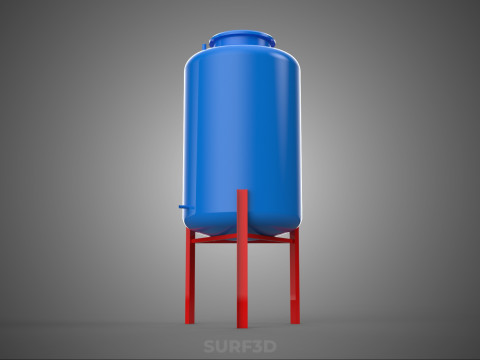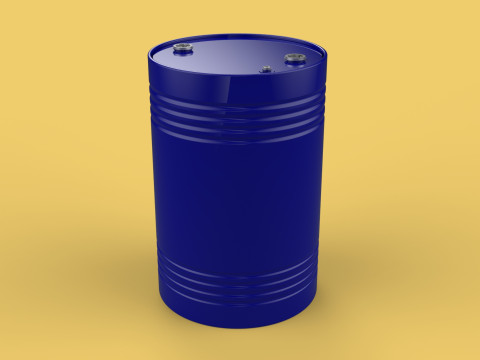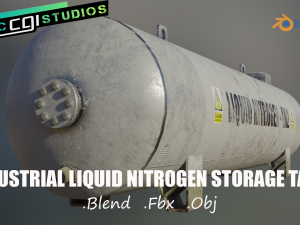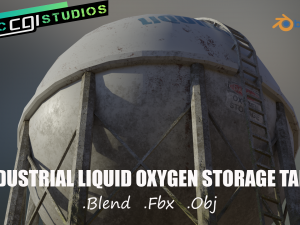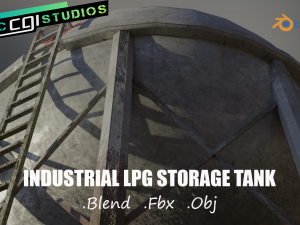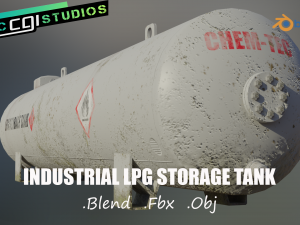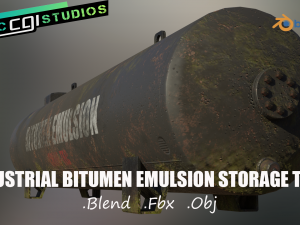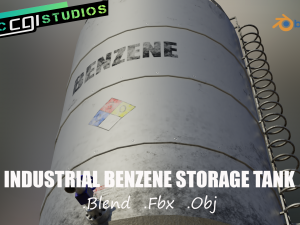STANDARD EMPTY BLUE WATER FLUID LIQUID STORAGE CONTAINER TANK 3D Model
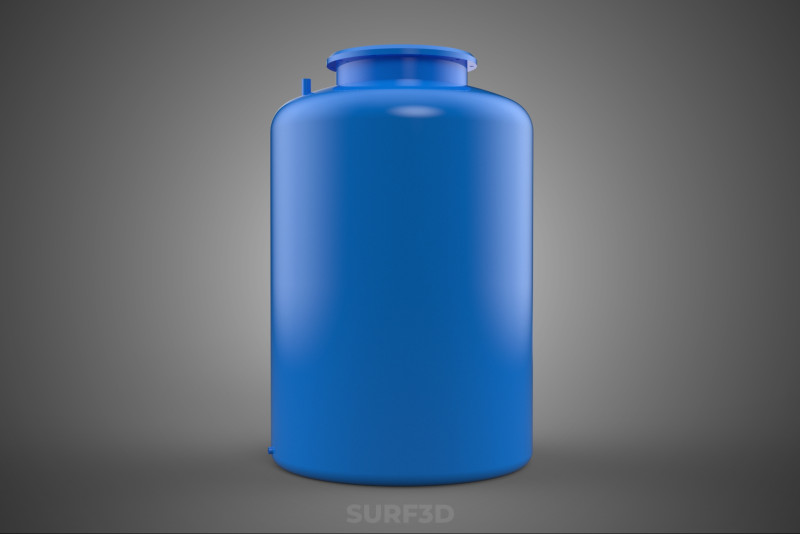
- Available formats: Rhinoceros (.3dm) 385.15 kb3D Studio (.3ds) 43.26 kbBlender3D (.blend) 181.83 kbCollada (.dae) 104.64 kbAutoCAD (.dwg) 112.57 kbAutodesk FBX (.fbx) 127.30 kbGLB (.glb / .gltf) 48.50 kbIGES (.iges) 71.79 kbAutodesk 3DS MAX (.max) 198.83 kbWavefront OBJ (.obj) 64.67 kbACIS(.sat) 71.73 kbSketchUp (.skp) 149.43 kbSTEP (.step) 46.88 kbStereolithography (.stl) 62.22 kb
- Polygons:4846
- Vertices:4065
- Animated:No
- Textured:No
- Rigged:No
- Materials:
- Low-poly:No
- Collection:No
- UVW mapping:No
- Plugins Used:No
- Print Ready:No
- 3D Scan:No
- Adult content:No
- PBR:No
- AI Training:No
- Geometry:Poly NURBS
- Unwrapped UVs:Unknown
- Views:17
- Date: 2025-08-25
- Item ID:594703
High-quality 3D assets at affordable prices — trusted by designers, engineers, and creators worldwide. Made with care to be versatile, accessible, and ready for your pipeline.
Included File Formats
This model is provided in 14 widely supported formats, ensuring maximum compatibility:
• - FBX (.fbx) – Standard format for most 3D software and pipelines
• - OBJ + MTL (.obj, .mtl) – Wavefront format, widely used and compatible
• - STL (.stl) – Exported mesh geometry; may be suitable for 3D printing with adjustments
• - STEP (.step, .stp) – CAD format using NURBS surfaces
• - IGES (.iges, .igs) – Common format for CAD/CAM and engineering workflows (NURBS)
• - SAT (.sat) – ACIS solid model format (NURBS)
• - DAE (.dae) – Collada format for 3D applications and animations
• - glTF (.glb) – Modern, lightweight format for web, AR, and real-time engines
• - 3DS (.3ds) – Legacy format with broad software support
• - 3ds Max (.max) – Provided for 3ds Max users
• - Blender (.blend) – Provided for Blender users
• - SketchUp (.skp) – Compatible with all SketchUp versions
• - AutoCAD (.dwg) – Suitable for technical and architectural workflows
• - Rhino (.3dm) – Provided for Rhino users
Model Info
• - All files are checked and tested for integrity and correct content
• - Geometry uses real-world scale; model resolution varies depending on the product (high or low poly)
• • - Scene setup and mesh structure may vary depending on model complexity
• - Rendered using Luxion KeyShot
• - Affordable price with professional detailing
Buy with confidence. Quality and compatibility guaranteed.
If you have any questions about the file formats, feel free to send us a message — we're happy to assist you!
Sincerely,
SURF3D
Trusted source for professional and affordable 3D models.
More Information About 3D Model :
A "Standard Empty Blue Water Fluid Liquid Storage Container Tank" refers to a common, commercially available, and typically pre-fabricated vessel, characterized by its distinctive blue coloration and primary design intent for the containment and dispensing of liquid substances, predominantly water or water-based fluids. The descriptor "empty" indicates its current state of being devoid of contents, while "standard" implies adherence to widely recognized industry specifications regarding design, materials, and functionality, facilitating broad applicability across various sectors.
The composite title encomp***** terms that, while seemingly redundant, serve to emphasize specific attributes. "Fluid" and "liquid" both denote the state of matter the tank is designed to hold, with "liquid" being the more precise term for water. "Container" and "tank" both refer to the storage vessel, with "tank" often suggesting a larger, more robust, or permanently installed unit. The "standard" aspect highlights a typical design, material specification, or capacity range, often related to manufacturing processes that yield a widely utilized and recognized product.
These tanks are extensively employed for the safe and efficient storage of liquids in diverse environments. Their primary application involves water storage for potable (drinking water), non-potable (irrigation, industrial processes, fire suppression), rainwater harvesting, and emergency reserves. Beyond water, they may also store diluted chemicals, agricultural solutions, or other non-corrosive industrial liquids, provided material compatibility is ensured. Key sectors include agriculture, residential (e.g., well water, cisterns), commercial facilities, industrial manufacturing, and disaster preparedness initiatives.
**Key Characteristics and Features:**
* **Color (Blue):** The distinctive blue color is frequently chosen for several reasons. It often serves as an immediate visual indicator for water storage, aligning with industry color-coding conventions, particularly for potable water. The pigmentation can also offer a degree of ultraviolet (UV) radiation resistance, protecting the stored liquid from degradation by sunlight and inhibiting algae growth within translucent plastic materials, thus contributing to water quality preservation.
* **Material:** The vast majority of standard blue liquid storage tanks are constructed from polymer plastics, primarily High-Density Polyethylene (HDPE) or Linear Low-Density Polyethylene (LLDPE). These materials are favored for their excellent chemical resistance, impact durability, corrosion resistance, and relative lightweight nature. For potable water applications, tanks are typically made from virgin, food-grade plastics compliant with relevant health and safety standards (e.g., FDA, NSF/ANSI). While other materials like fiberglass or steel can be used for liquid storage, the "standard blue" designation most commonly points to polymer constructions.
* **Construction:** Polymer tanks are typically manufactured using rotational molding or blow molding techniques, which create seamless, unitary structures, effectively minimizing potential leak points. This results in robust, durable tanks capable of withstanding external stresses and the hydrostatic pressure of their contents. Common design elements include reinforced walls, ribbing for structural integrity, and integrated lifting points.
* **Design and Form Factors:** These tanks are available in a variety of configurations to suit diverse installation requirements. Common forms include vertical cylindrical tanks, horizontal tanks (often for transport or lower height requirements), rectangular tanks (for space efficiency), and conical bottom tanks (facilitating complete drainage for specific industrial processes). Tanks are equipped with standard fittings for inlets, outlets, vents, and often an access hatch for cleaning and inspection. Level indicators can be incorporated to monitor content volume.
* **Capacity:** Standard tanks range significantly in volume, from small residential units of a few hundred liters (or gallons) to large industrial or agricultural tanks storing tens of thousands of liters (or gallons).
* **Standards and Regulations:** Tanks intended for specific uses, particularly potable water, must comply with national and international standards. Examples include NSF/ANSI Standard 61 for drinking water system components, FDA regulations for food-contact materials, and various building codes or environmental agency guidelines relevant to the storage of liquids.
**Operational Considerations:**
Installation practices vary based on the tank's size, material, and intended location (above-ground, partially buried, or underground). Proper site preparation, including a level, stable foundation, is crucial to prevent structural failure and ensure longevity. Maintenance typically involves periodic inspection for leaks, damage, or sediment buildup, and cleaning to maintain water quality, especially for potable applications. Safety features like overflow prevention and appropriate venting are essential to manage pressure changes and prevent contamination.
**Environmental Aspects:**
Polyethylene tanks are generally durable with a long service life, typically spanning several decades under optimal conditions. At the end of their useful life, many plastic tanks are recyclable, contributing to a circular economy and reducing landfill waste, though specialized recycling facilities may be required for large industrial units.
**Variations and Related Terms:**
While the specific title describes a common type, variations exist, including tanks of different colors (e.g., black for maximum UV absorption, white for heat reflection), alternative materials (e.g., stainless steel, concrete), or specialized designs for chemical containment, high-pressure applications, or specific fluid densities. Related terms include cistern, water butt, bulk storage tank, chemical storage tank, utility tank, and polyethylene storage vessel.
If you need a different format, please send us a Conversion Request. We can convert 3D models to: .stl, .c4d, .obj, .fbx, .ma/.mb, .3ds, .3dm, .dxf/.dwg, .max. .blend, .skp, .glb. We do not convert 3d scenes and solid formats such as .step, .iges, .stp, .sldprt etc!


 English
English Español
Español Deutsch
Deutsch 日本語
日本語 Polska
Polska Français
Français 中國
中國 한국의
한국의 Українська
Українська Italiano
Italiano Nederlands
Nederlands Türkçe
Türkçe Português
Português Bahasa Indonesia
Bahasa Indonesia Русский
Русский हिंदी
हिंदी